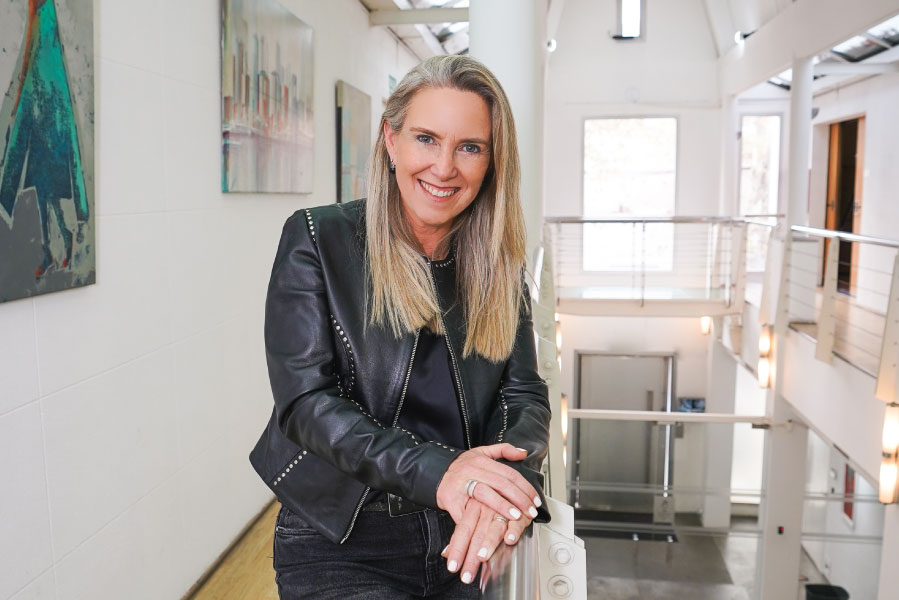

“In an absolutely changing world, the companies and brands that are projected to continue existing have the natural obligation to incorporate the voice of the customer in their veins and turn it into the fundamental food of their adaptability, transformation and closeness to the customer”, defines Connie Demuru, CEO and Co-Founder of Destí.
The challenge is to “nourish all product, management, service, experience, relationship decisions with this information and by applying that knowledge achieve sustained preference, the long-awaited relevance in the customer,” she adds.
“In a smart world, where data rules, it does not seem difficult to have it, however, the orchestration of all the information available throughout the company to make decisions creates a major challenge and even greater challenge to apply it. Real customer orientation, conscientiously implemented, questions companies and their teams from their culture to their processes”, says the CEO of Destí.
Investigate / Research and act
For his part, Paulo Nuchi, partner and director of the Quantitative Content area at Provokers, assures that “from the research point of view (market research), there is no limit to understanding the experience, needs and feelings regarding a service or brand. And adds, “The point is then to try to determine what is behind that demand and translate it into options that are operable for a brand or service. Obviously, a brand cannot give everything, but it does need to connect efficiently with its users or consumers”.
At this point, we must highlight the famous maxim in the business world that ensures that the client is always right. And while this may not be accurate on some occasions, companies do need to ask themselves if they are giving their customers everything they ask for. “Here we could distinguish two large types of organizations: the digital natives, which were born thinking about the relationship they will maintain with the client and how to respond to many of the problems they will have to address, and those that are transforming or should do so,” he says. Carlos Rozen, BDO Argentina partner in charge of consulting practices.
But the consumer is the same. “So, this race to capture the same client that these two types of organizations are experiencing requires intelligence and technology at its core. In essence, if the sought-after cultural transformation does not attack the core, it is not a real transformation. It is about transforming the entire organization, leveraging awareness, training and motivation, and clear digital leadership with a strong customer orientation”, adds Rozen.
At the same time, you have to take into account what happens and how to respond in the different channels. “Consumers and users are and are not the same in their journey through the different channels. Our moods and emotions are not the same at all times or occasions.
But, at the same time, our anchorage with the brand or service is unique. What the brand proposes to us simply is and what is expected is that it be consistent with its offer at the different points of contact with the different customers”, Nuchi details.
“When this does not happen, the consumer notices these noises or inconsistencies and they cause them discomfort or inconvenience, and they end up thinking that more than the positioning is a pose or a marketing action. Permanent inquiry with different research techniques makes it possible to identify those emotions, the relevance that each moment of their journey has for the person and the points of friction that appear as key raw material to be able to find solutions of multi-channel consistency”, adds the partner of Provokers.
In this sense, Rozen believes: “The multichannel customer experience implies much more than the mere configuration of a technological solution for each channel. That is why many organizations end up hiring non-experts. And the consequence of this is a countless number of projects that remain on the road”.
According to experts, there is no doubt that adopting a multichannel customer experience (CX) strategy is a very appropriate decision and that the expected benefits more than justify the effort. “To be successful, avoiding creating false expectations and not disappointing customers, you must first prepare everything necessary behind the scenes of the company. This implies connecting platforms and people, articulating efforts and processes of the entire organization as a whole”, adds Rozen.
It is also necessary to define priorities and alternative spaces for action to protect that designed experience against possible deviations. “Training is also part of the unavoidable list of requirements to internally articulate the experience. And, of course, shared conviction is essential: empowered people who know what the North of the organization of which they are a part is and appropriate it. They will be the ones in charge of connecting, without hesitation, that connection that was not established by protocol”, details the BDO partner.
Finally, Tatiana Stanislawowski, director of strategy at Destí, assures that the human touch (or the human hand) in technology is the main challenge. “You have to analyze how to return to values such as closeness, empathy and the old-school understanding of one on one in the digital age. Those companies that do not continue working in this line will have their technical channels developed, but they will distance themselves from the real conversation”, she explains.

Nueva demanda: La experiencia de los usuarios se vuelve compleja y esencial

Marysol Antón
En una relación cada vez más multicanal y atravesada por la digitalización, las empresas ponen el foco en qué tipo de contacto tienen con sus clientes.

In Latin America, the importance of CX is already installed.

